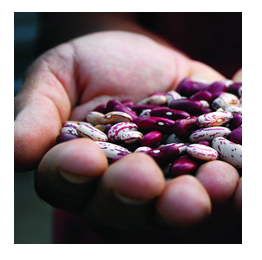 Scientists at the International Center for Tropical Agriculture (CIAT) in Colombia announced last month that they are making progress on a bean designed for expected temperature increases. By crossing a modern bean with one of its obscure Mexican relatives, the CIAT team has created a variety that can withstand the expected 3 C (5.4 F) rise in temperature over the next century. This discovery could be a big boon for bean production because we are facing a dire situation where, by 2050, global warming could reduce areas suitable for growing beans by 50 percent, Steve Beebe, the team s lead bean researcher, said in a release.
Scientists at the International Center for Tropical Agriculture (CIAT) in Colombia announced last month that they are making progress on a bean designed for expected temperature increases. By crossing a modern bean with one of its obscure Mexican relatives, the CIAT team has created a variety that can withstand the expected 3 C (5.4 F) rise in temperature over the next century. This discovery could be a big boon for bean production because we are facing a dire situation where, by 2050, global warming could reduce areas suitable for growing beans by 50 percent, Steve Beebe, the team s lead bean researcher, said in a release.
Aware of the devastating impact climate change could have on the world s bean harvest, Beebe has been scouring the gene bank for an obscure variety that might show signs of heat and drought resistance. After testing over a thousand samples, he found a heat-tolerant bean, known as the tepary bean. Beebe began to cross the tepary with more common varieties such as pinto, white, black, and kidney beans.
According to a report by Quartz s Jack Aldwinckle, the results were beyond Beebe s wildest hopes. Some of the crossed beans showed signs of being able to handle a 3 C rise, Aldwinckle reported, while others seemed able to withstand 4 C or more. This means that the new beans might not only mitigate the effects of climate change where beans are already grown, but even allow production to expand into new parts of Central America and East Africa. To read more about the heat-tolerant bean, see Quartz s feature, and CIAT s news release.
